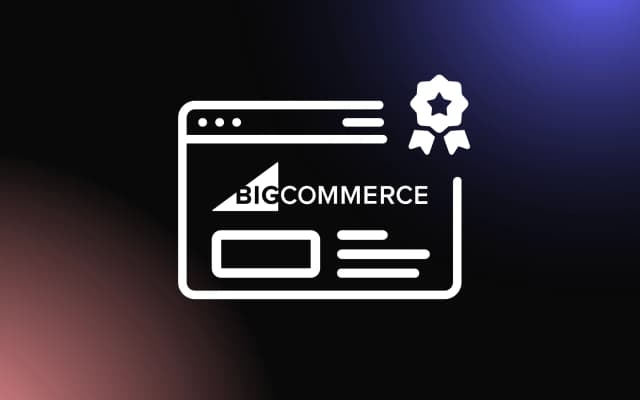
Creating a content strategy that drives results is like crafting a master recipe for your favorite dish. It involves carefully selecting the right ingredients, mixing them in the correct proportions, and cooking them to perfection.
In the context of content marketing, these ingredients are your audience insights, content types, distribution channels, and performance metrics.
This article will serve as your guide to creating a content strategy that not only engages your audience but also drives tangible results. We'll delve into the process of defining your content goals, understanding your audience, creating compelling content, and measuring its impact.
Whether you're a seasoned content marketer or a business owner looking to boost your brand's visibility, this article will equip you with the insights to create a content strategy that truly delivers.
Maximizing Digital Marketing Through Effective Content Strategy

Effective content strategy is a vital component of digital marketing, encompassing the planning, development, and management of content across various media. It's more than just content creation; it's about crafting meaningful, cohesive, and engaging content that resonates with your target audience and sustains their interest. This strategy forms a core part of your marketing plan, showcasing your brand's identity and expertise within your industry.
By producing, publishing, and managing content that is both useful and usable, the aim is to attract and retain a well-defined audience, ultimately leading to profitable customer actions. A well-implemented content strategy not only builds brand reputation and boosts audience retention but also plays a significant role in enhancing online visibility. This is achieved through improved search engine rankings, as search engines favor businesses that consistently publish high-quality content.
In essence, a robust content strategy ensures that every piece of content serves a purpose, aligns with the company’s values and goals, and meets the needs of customers, thereby delivering a consistent message across all digital platforms.
Key Components of a Successful Content Strategy

A successful content strategy is more than just producing and sharing content. It requires careful planning and consideration of various elements to ensure that the content not only reaches the target audience but also resonates with them. Here are the key components of a successful content strategy:
Clear Content Goals
The first step in creating a content strategy is to define clear and measurable goals. What do you want to achieve with your content? This could be increasing website traffic, boosting brand awareness, generating leads, or improving conversion rates. Having clear goals will guide your content creation process and help you measure the success of your strategy.
Understanding of Target Audience
Knowing your target audience is crucial in content strategy. You need to understand their needs, preferences, and challenges to create content that resonates with them. This involves creating audience personas, researching their online behavior, and gathering feedback. The more you understand your audience, the more effective your content will be.
Content Types and Channels
Not all content types and channels are suitable for every audience. You need to determine what kind of content your audience prefers (blogs, videos, infographics, etc.) and where they spend their time online. This could be on social media platforms, blogs, forums, or email. Choosing the right content types and channels will ensure your content reaches your audience.
Content Calendar
A content calendar is a schedule that outlines when and where you plan to publish upcoming content. It helps you organize your content efforts and ensures you consistently publish high-quality content. It also allows you to plan content around key dates or events relevant to your business or industry.
Content Promotion Plan
Creating great content is just the first step. You also need a plan to promote your content to reach a larger audience. This could involve sharing content on social media, using SEO techniques to increase search engine visibility, or using paid advertising.
A good promotion plan will help your content reach more people and achieve your content goals.
Steps to Create a Content Strategy
Creating a content strategy is a critical step for any business looking to engage their audience, increase brand awareness, and drive sales. Here's a step-by-step guide to creating a successful content strategy:
Step 1: Define Your Content Goals
The first step in creating a content strategy is to define your content goals. What do you want to achieve with your content? This could be anything from increasing website traffic, boosting brand awareness, generating leads, or improving conversion rates.
Your goals should be specific, measurable, achievable, relevant, and time-bound (SMART) to ensure they guide your strategy effectively.
Step 2: Identify Your Target Audience
The next step is to identify your target audience. Who are you creating content for? What are their interests, needs, and challenges? You can gather this information through market research, customer feedback, and analytics data. Creating audience personas can also be helpful in understanding your audience and creating content that resonates with them.
Step 3: Choose Your Content Types and Channels
Once you know your audience, you can decide on the types of content that will resonate with them and the channels where they are most likely to engage with it. This could include blog posts, videos, infographics, podcasts, social media posts, newsletters, etc.
The channels could be your website, social media platforms, email, etc. The choice of content types and channels should align with your audience's preferences and your content goals.
Step 4: Create a Content Calendar
A content calendar is a schedule of when and where you plan to publish your content. It helps you plan and organize your content creation efforts and ensures you consistently publish high-quality content.
Your content calendar should include key dates, content topics, content types, and publishing channels. It should also leave room for flexibility to accommodate timely content related to current events or trending topics.
Step 5: Develop a Content Promotion Plan
Creating great content is just the first step. You also need a plan to promote your content to reach a larger audience.
This could involve sharing your content on social media, optimizing it for search engines (SEO), or using paid advertising. Your promotion plan should be as detailed as possible, outlining where and when you will promote your content and who will be responsible for each task.
Tools to Support Your Content Strategy
Implementing a successful content strategy requires the right tools. These tools can help you manage your content, optimize it for search engines, schedule it for social media, and analyze its performance. Here are some tools that can support your content strategy:
Content Management Systems
Content Management Systems (CMS) are software that helps you create, manage, and modify content on your website without needing specialized technical knowledge.
Some popular CMS include WordPress, Joomla, and Drupal. These platforms provide a user-friendly interface for creating and publishing content, and they often include features for SEO, social media integration, and analytics.
SEO Tools
SEO tools can help you optimize your content for search engines, making it easier for your target audience to find your content. Tools like SEMrush, Moz, and Ahrefs can help you conduct keyword research, analyze your website's SEO performance, and identify opportunities for improvement.
These tools can also provide insights into your competitors' SEO strategies, helping you stay competitive.
Social Media Scheduling Tools
Social media is a crucial channel for content promotion. Social media scheduling tools like Buffer, Hootsuite, and Sprout Social allow you to schedule your social media posts in advance, ensuring that your content reaches your audience at the optimal times.
These tools can also provide analytics on your social media performance, helping you understand what content resonates with your audience.
Analytics Tools
Understanding how your content performs is key to refining your content strategy. Analytics tools like Google Analytics, Adobe Analytics, and Mixpanel can provide insights into how your audience interacts with your content.
These tools can show you which content pieces are most popular, how long users spend on your site, what paths they take through your site, and more. This data can help you understand what's working in your content strategy and what needs improvement.
Evaluating and Adjusting Your Content Strategy
A successful content strategy is not a set-it-and-forget-it endeavor. It requires regular evaluation and adjustment to ensure it continues to meet your business goals and resonate with your audience. Here's how to evaluate and adjust your content strategy:
Key Metrics for Content Success
Determining the success of your content strategy involves tracking key metrics. These can include website traffic, time spent on page, bounce rate, social media shares, and conversion rates.
These metrics can provide insights into how well your content is performing and whether it's achieving your desired goals.
For example, a high bounce rate might indicate that your content isn't engaging your audience, while a high conversion rate could suggest that your content is effectively driving desired actions.
Regular Review and Adjustment of Strategy
Your content strategy should be a living document that evolves over time. Regularly review your strategy to ensure it aligns with your current business goals and audience needs.
This might involve adjusting your content types, channels, or promotion strategies based on what's working and what's not. For example, if your analytics show that your audience engages more with video content, you might decide to invest more in video production.
Responding to Audience Feedback and Trends
Stay attuned to feedback from your audience and trends in your industry. Comments, reviews, and social media interactions can provide valuable insights into what your audience thinks about your content. Similarly, keeping an eye on industry trends can help you stay relevant and competitive.
For example, if there's a growing interest in a particular topic in your industry, you might want to create content around that topic.
Common Mistakes in Content Strategy
Even with the best intentions, it's easy to make mistakes when developing a content strategy. Here are some common pitfalls to avoid:
Mistake 1: Lack of Clear Goals
One of the most common mistakes in content strategy is not having clear, measurable goals. Without defined goals, it's difficult to determine whether your content is successful or not. Goals could range from increasing website traffic, boosting brand awareness, generating leads, or improving conversion rates.
Each piece of content you create should align with these goals and have key performance indicators (KPIs) to measure its success.
Mistake 2: Ignoring Audience Preferences
Another common mistake is ignoring the preferences of your target audience. Your content should be tailored to meet the needs and interests of your audience.
This involves understanding who your audience is, what they care about, and how they consume content. Ignoring audience preferences can result in content that fails to engage your audience or drive desired actions.
Mistake 3: Failing to Promote Content Effectively
Creating great content is only half the battle. If you don't promote your content effectively, it's unlikely to reach your target audience and achieve your goals.
This can involve sharing your content on social media, using SEO to improve your content's visibility in search engines, or leveraging email marketing to distribute your content to your subscribers.
The Impact of a Strong Content Strategy on Business Success
A well-crafted content strategy can have a significant impact on your business success. Here's how:
Increased Audience Engagement
A strong content strategy involves creating high-quality, relevant content that resonates with your target audience.
This not only attracts your audience but also keeps them engaged. Engaged users are more likely to spend more time on your website, share your content, and convert into customers. They may also become loyal followers and advocates for your brand, further amplifying your reach and impact.
Improved SEO Rankings
Content is king when it comes to search engine optimization (SEO). Search engines like Google reward websites that consistently produce high-quality, relevant content. A robust content strategy can help you target relevant keywords, answer your audience's questions, and improve your website's visibility in search engine results.
This can lead to increased organic traffic, which is often more engaged and more likely to convert than paid traffic.
Enhanced Brand Awareness and Reputation
Finally, a strong content strategy can significantly boost your brand's awareness and reputation. By consistently producing valuable content, you can position your brand as an authority in your industry.
This not only makes your brand more recognizable but also builds trust with your audience. When customers trust your brand, they're more likely to choose your products or services over your competitors.
Conclusion
In conclusion, creating a content strategy that drives results is a meticulous process that requires a deep understanding of your audience, clear content objectives, and consistent performance tracking. It's about creating content that resonates with your audience, aligns with your business goals, and drives meaningful engagement.
Remember, a successful content strategy is not set in stone; it's a dynamic plan that evolves with your audience, your business, and the digital landscape. With the insights and strategies shared in this article, you're now well-equipped to create a content strategy that drives results. So, let's put these insights into action and create content that not only captivates but also converts.




